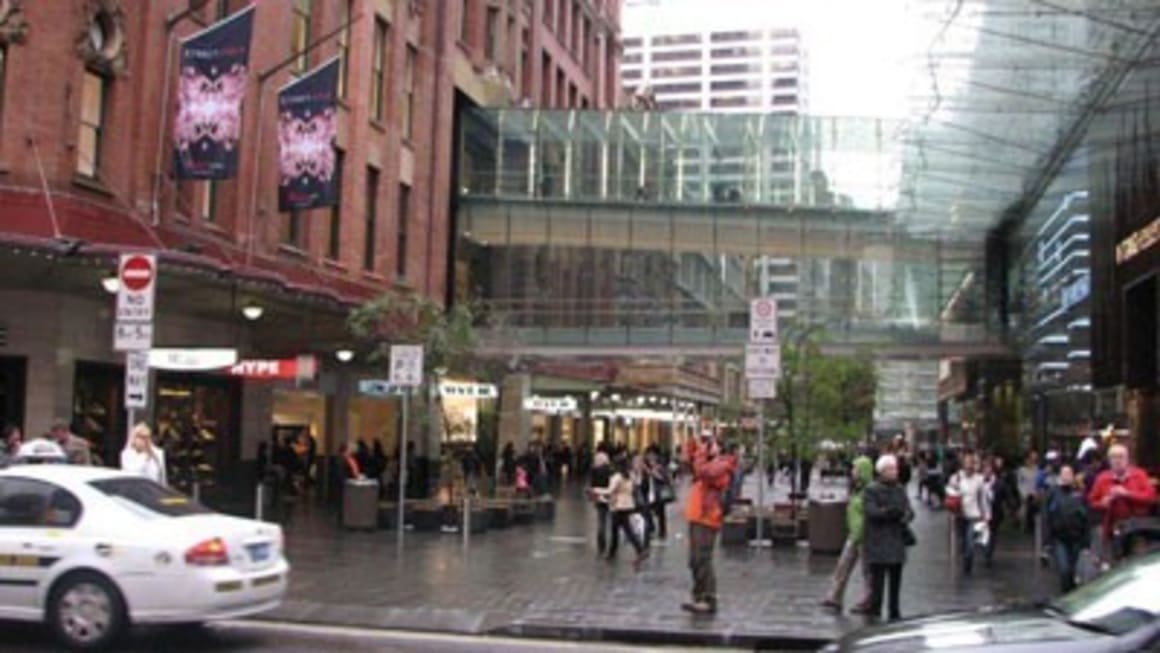Apart from Pitt Street Mall, NSW retail outlook bleak: NAB

As we look to what's ahead for 2012, Property Observer is republishing some of our most noteworthy stories of 2011.
Investors in retail property outside of the Sydney CBD face the prospect of both declining asset values and a contraction of rental growth over the next two years, according to the NAB June quarter commercial property survey.
The 300 property market respondents surveyed by the bank forecast NSW retail property values would be down 1.6% in the June 2011 quarter and would continue to decline by 1.4% in 2012 and 0.6% in 2013.
The outlook for rents is equally bleak, with a forecasted decline in values of 1.6% in June 2011 expected to be followed by declines of 1.6% in the December 2011 quarter and falls of 1.5% and 0.6% in 2012 and 2013.
CBD retail property was identified as the best-performing property type “by some margin”, with the bulky goods sector, which includes automotive parts, whitegoods and furniture, the weakest.
The poor outlook for NSW reflects “the expected impact of impending interest rate increases on disposable incomes already stretched by the higher cost of living in the state,” according to the report.
More than half (54%) of respondents identified leasing incentives as “very significant” or “significant” for retail property in NSW.
Respondents also said excess supply was most prevalent in Queensland and NSW.
And while the national retail market is expected to be broadly balanced over the next three years, NSW is expected to “somewhat over-supplied.
A review of the performance Sydney metropolitan retail property market in the second quarter of 2011 by CB Richard Ellis draws similar conclusions, following only a 1.6% increase in retail turnover in the first six months of 2011.
CBRE reports of a “relatively flat” retail property sector for Sydney, bar the super-prime Pitt Street Mall retail strip where vacancies have shrunk to just 0.9%.
In comparison, the vacancy rate for prime Sydney retail property remains unchanged at 5.1% while vacancies for bulky good stores are three times higher at 14.6% for prime locations and 16.5% for secondary locations.
Vacancies are also high in some of the more fashionable suburban retail strips, relative to the Sydney CBD (3.1%). On the Oxford Street thoroughfare in Paddington, the vacancy rate stands at 6.7%, and it is at 7.1% in the Double Bay precinct.
The vacancy rate on the more affordable King Street strip in Newtown in Sydney’s inner west is at just 2.6%.
About 1.35 million square metres of new shopping centre retail space is set to come onto the market in regional areas outside the Sydney metro area by 2014. Projects to be completed in 2012 include Stockland neighbourhood shopping centres in Merrylands and Glenrose.
Shopping centre extensions are also underway at the Macquarie Centre in Ryde, Westfield Miranda, Stockland Shellharbour and the Warringah mall, which will add 123,00 square metres of floor space to regional retail shopping floor space.
The poor outlook for bulky goods is reflected in all seven of the bulky good projects currently underway in NSW, being constructed for retailers with no speculative developments. These include four Bunnings outlets in outer western Sydney, a 39,000-square-metre IKEA in Tempe and a Costco outlet in Auburn.
NSW’s poor showing reflects the continuing struggles of the retail sector as whole, with the sector expected to remain the weakest-performing commercial property market “by some margin” over the next year with conditions remaining “very soft,” according to NAB.
For a sector as a whole, the NAB Retail Property Index fell by 28 points in June following a drop of 23 points in March.
It remains the weakest performer in the industrial property space as retailers continue to suffer from low retail sales turnover and weak consumer confidence.
Nationwide capital value expectations for retail property improved marginally in June, with values down -1.8%, compared with a -1.9% fall in March. Capital values were negative in all other states, except WA where they were flat.
WA is the only state where capital values are forecast to rise (growth revised down from 2.8% to 1.4%) over the year to June 2012.
Looking ahead to June 2013, Queensland is expected to match Western Australia, (currently the strongest performing retail property market) with growth of 1.8% in the value of retail properties.
Respondents again identified the CBD area as the most favoured location for retail property with bulky goods again considered to be the worst category of retail property in all states.